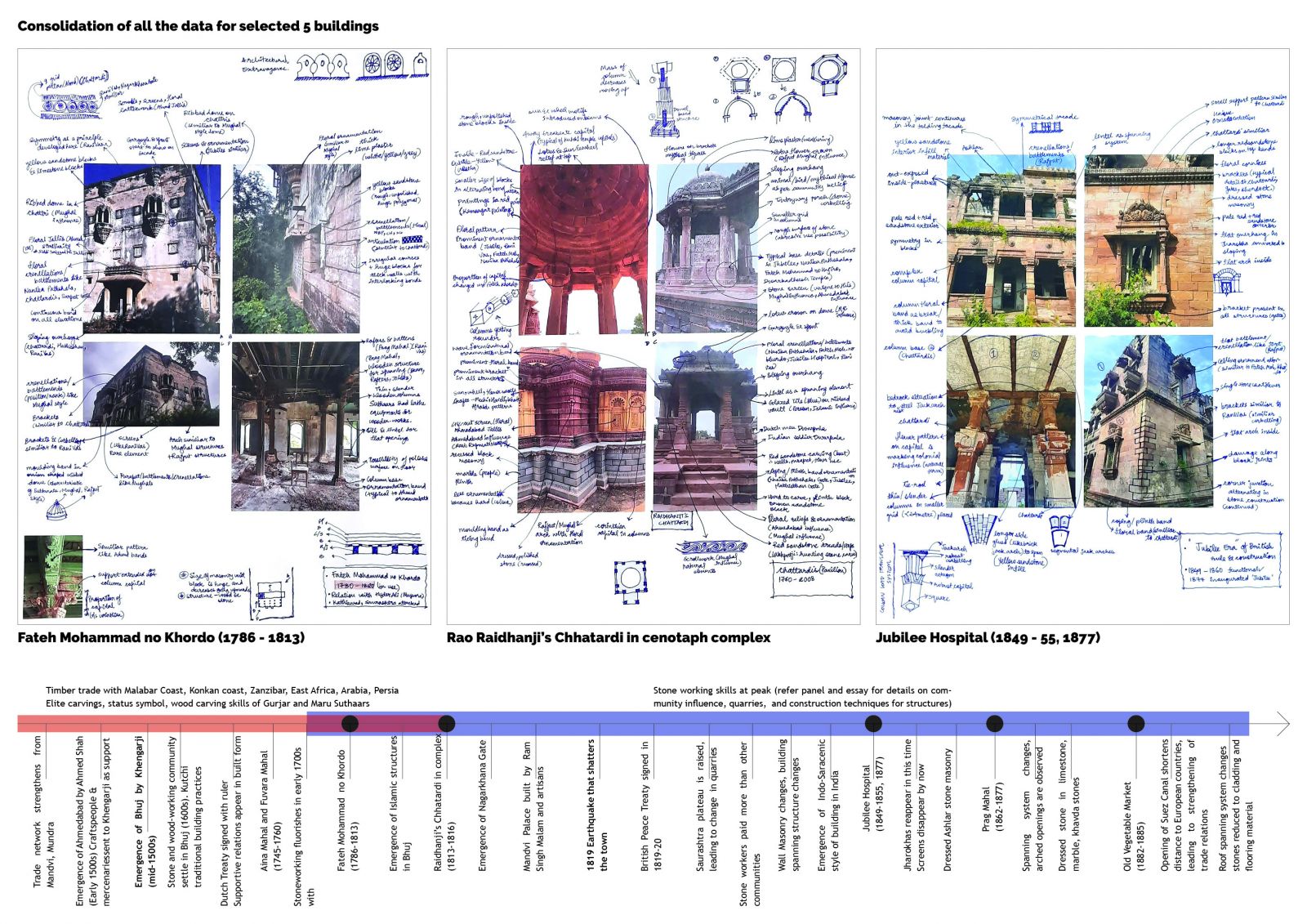Your browser is out-of-date!
For a richer surfing experience on our website, please update your browser. Update my browser now!
For a richer surfing experience on our website, please update your browser. Update my browser now!
Bhuj's architecture from the 1750s-1900s is shaped by complex relations of material resources, trade, community craftsmanship, 2 earthquakes, and socio-political events. From Aina Mahal to Khordo, Prag Mahal, and Kutch Museum, there are some continuities and discontinuities in construction that were fuelled by craft workers, foreign influences, and cultural exchange. The findings of the study pull out hidden dynamic processes involved in shaping the architecture of the city. This perspective and analysis challenges the idea of viewing static heritage structures. The transformation offers us lessons on resilience, traditional building techniques, globalisation, and growth of the city, adaptability of craftspeople.
View Additional Work





